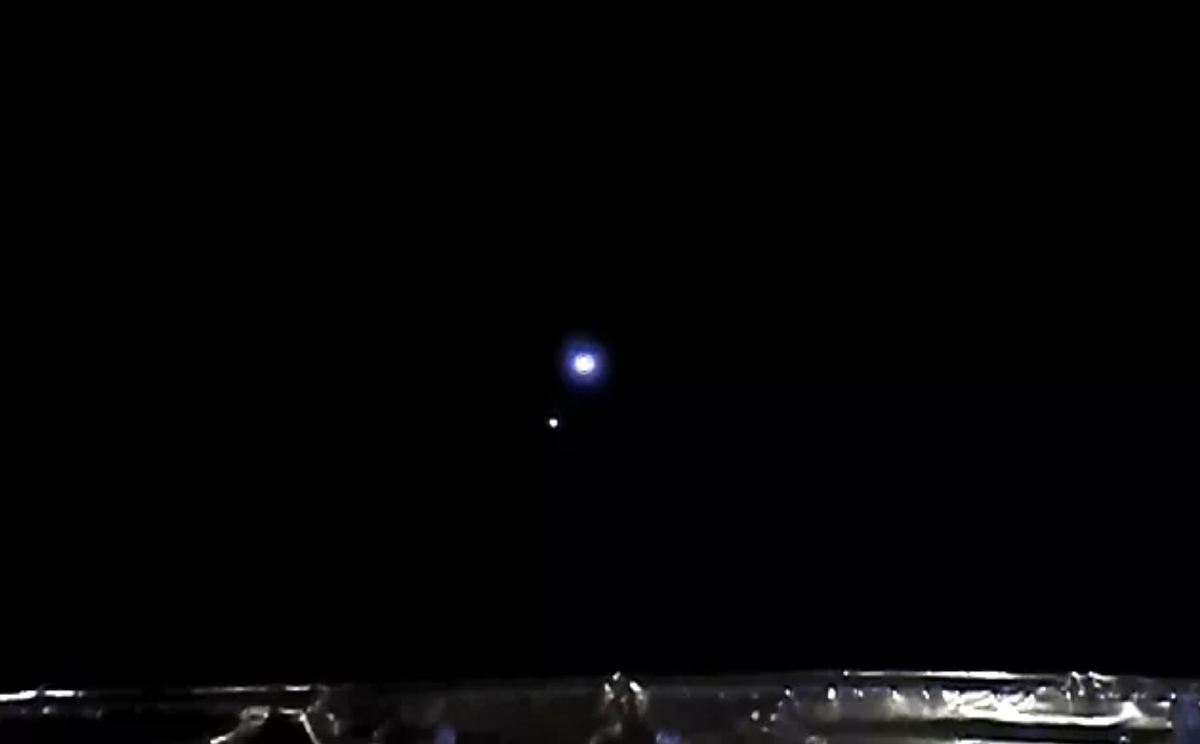HELSINKI — The orbiter for China’s Chang’e-6 lunar far side sample return mission is now at the second Sun-Earth Lagrange as part of extended activities.
The orbiter was a key component allowing China to collect the first-ever samples from the far side of the moon. It delivered a reentry module to Earth containing material from Apollo crater June 25 this year, marking the final leg of the complex, 53-day mission.
After delivering the samples to Earth, the orbiter fired its engines to avoid reentering Earth’s atmosphere, setting off on a new trajectory.
Amateur radio space tracking now reveals that the spacecraft traveled to Sun-Earth Lagrange point 2 (L2). L2 is a quasi-stable point in space where the gravitational and centrifugal forces are balanced, allowing spacecraft to maintain an orbit around with minimal station keeping.
CHANG’E 6 Service Module has been detected out around the Earth-Sun L2 point. The spacecraft’s declination will improve in the coming weeks and more observation of the object will occur then. pic.twitter.com/gBD35bSzyz
— Scott Tilley 🇺🇦 (@coastal8049) September 9, 2024
L2 is located approximately 1.5 million kilometers from Earth, directly on the opposite side of the Earth from the Sun. China’s space authorities have yet to provide an update on the orbiter and its plans. However, the Chang’e-6 orbiter’s voyage fits into a pattern of China using Chang’e spacecraft for extended missions as tests for future endeavors.
Chang’e-2, which orbited and mapped the moon in 2010, later performed a flyby of asteroid 4179 Toutatis.
The 2014 Chang’e-5 T1 mission tested a skip reentry for the Chang’e-5 sample return. That orbiter then entered a halo orbit around Earth-moon Lagrange point 2. This was a test of an orbit that would later provide communications for Chang’e-4, the first lunar far side landing, which itself paved the way for Chang’e-6.
The orbiter for the 2020 Chang’e-5 lunar sample return visited Sun-Earth L1 on its extended mission. It then returned to the Earth-moon system and tested a lunar distant retrograde orbit. The Tiandu lunar navigation and communications test mission is now using a similar orbit.
Future L2 missions, future target?The visit to L2 by the Chang’e-6 orbiter could provide useful experience for upcoming missions. China plans to send the “Earth 2.0” exoplanet-hunting mission to L2 in 2028. This same region of space is used by the James Webb Space Telescope. L2 provides a stable orbit, a constant view of deep space, and reduced interference from Earth for astronomy missions. China is also in the early study phase of the Tianlin space observatory. That would boast a 6-meter-aperture main mirror and focus on searching for habitable exoplanets and potential biomarkers from L2.
The Chang’e-6 orbiter is likely to perform observations with its engineering and monitoring cameras, perform operational tests, test communications with ground stations, and assess the local space environment.
With no updates from Chinese authorities, it is unclear if the Chang’e-6 orbiter will travel to another destination. This will depend upon the propellant remaining after its primary and extended mission so far.
China plans to launch its Tianwen-2 near-Earth asteroid sampling and comet rendezvous mission in 2025. The Chang’e-6 orbiter could potentially visit a near-Earth object as a precursor. This would depend upon propellant available, the orbit of an object, and other factors.
